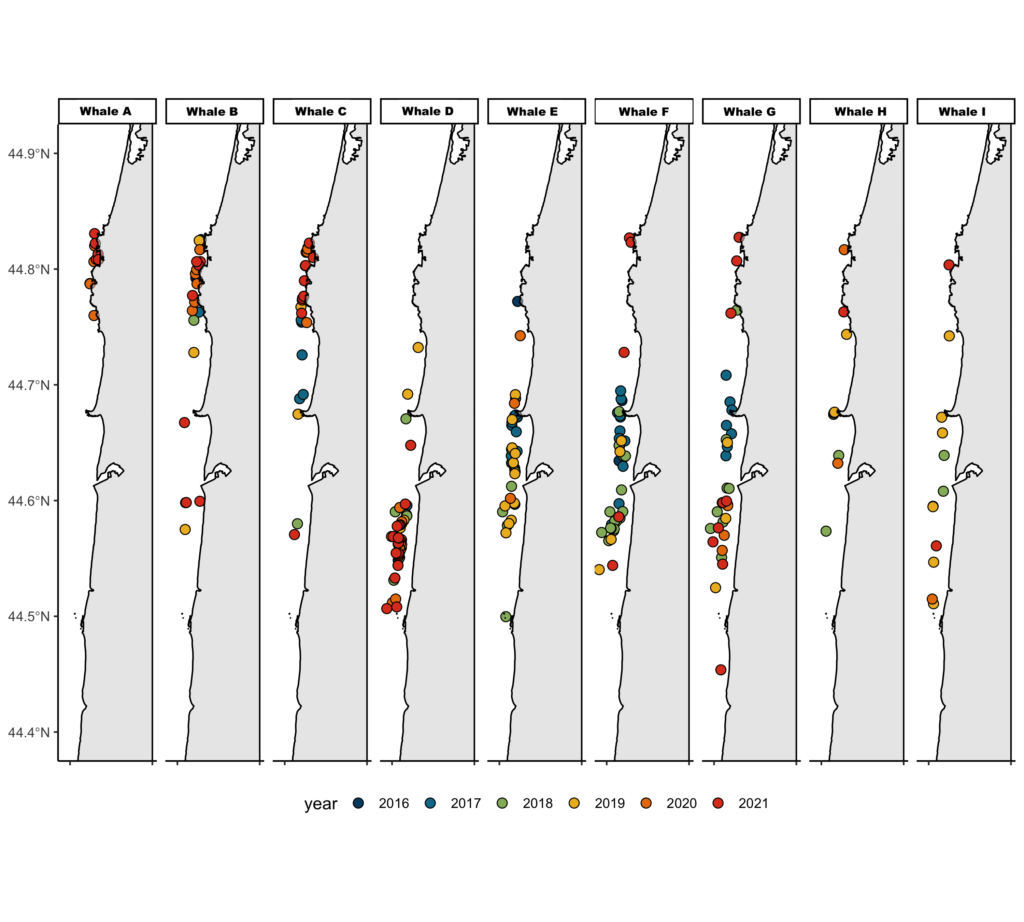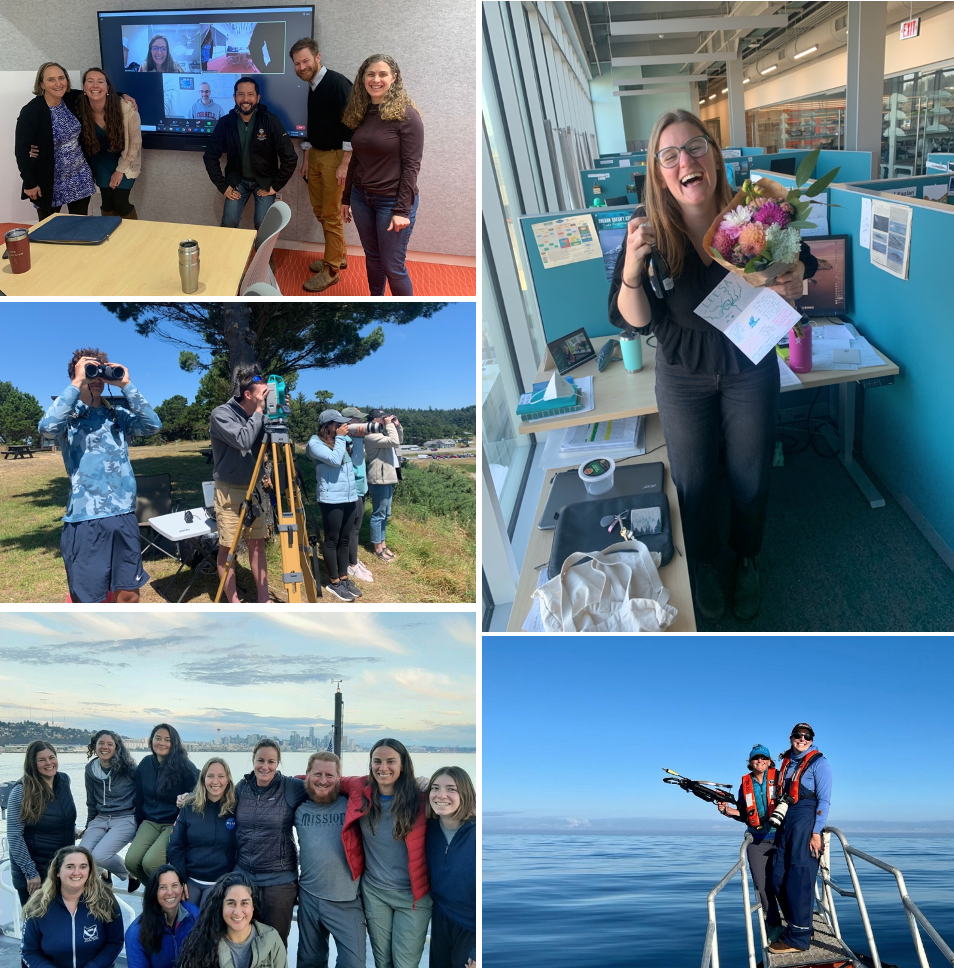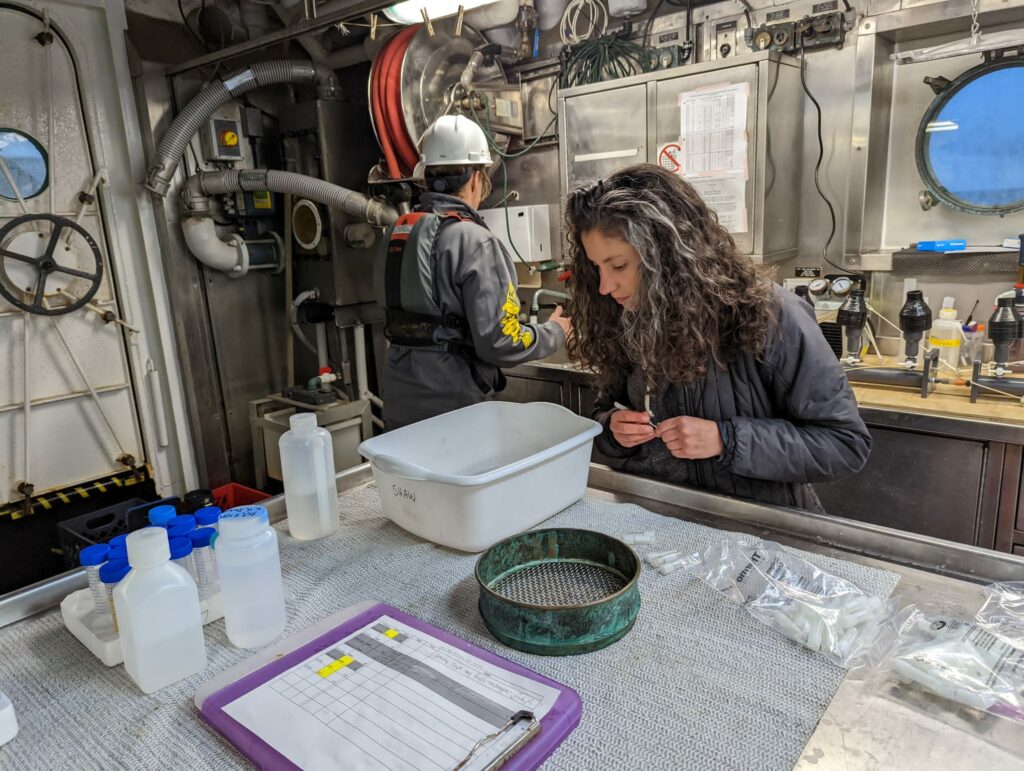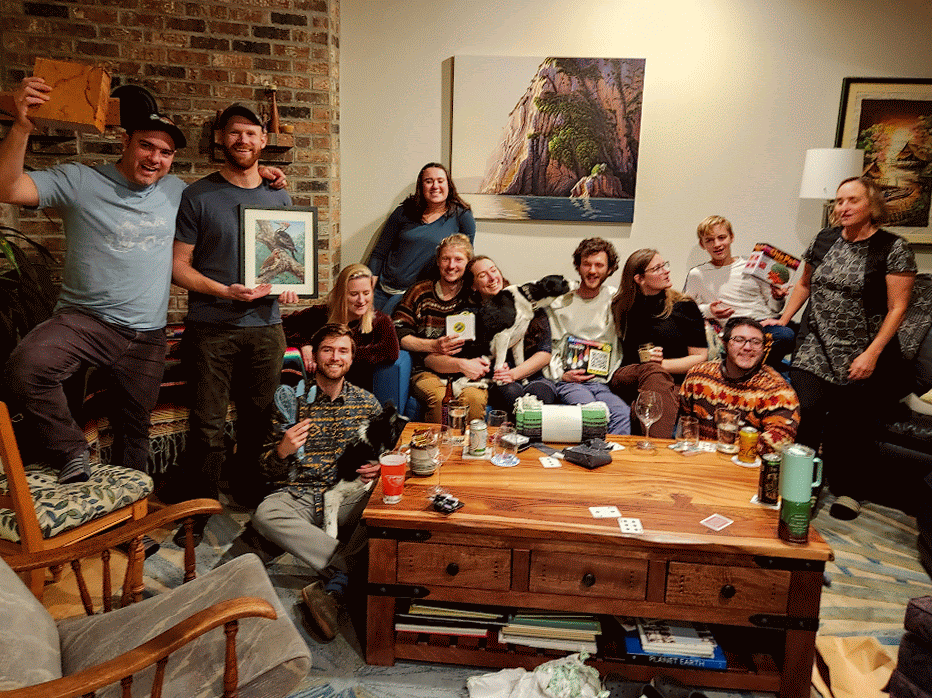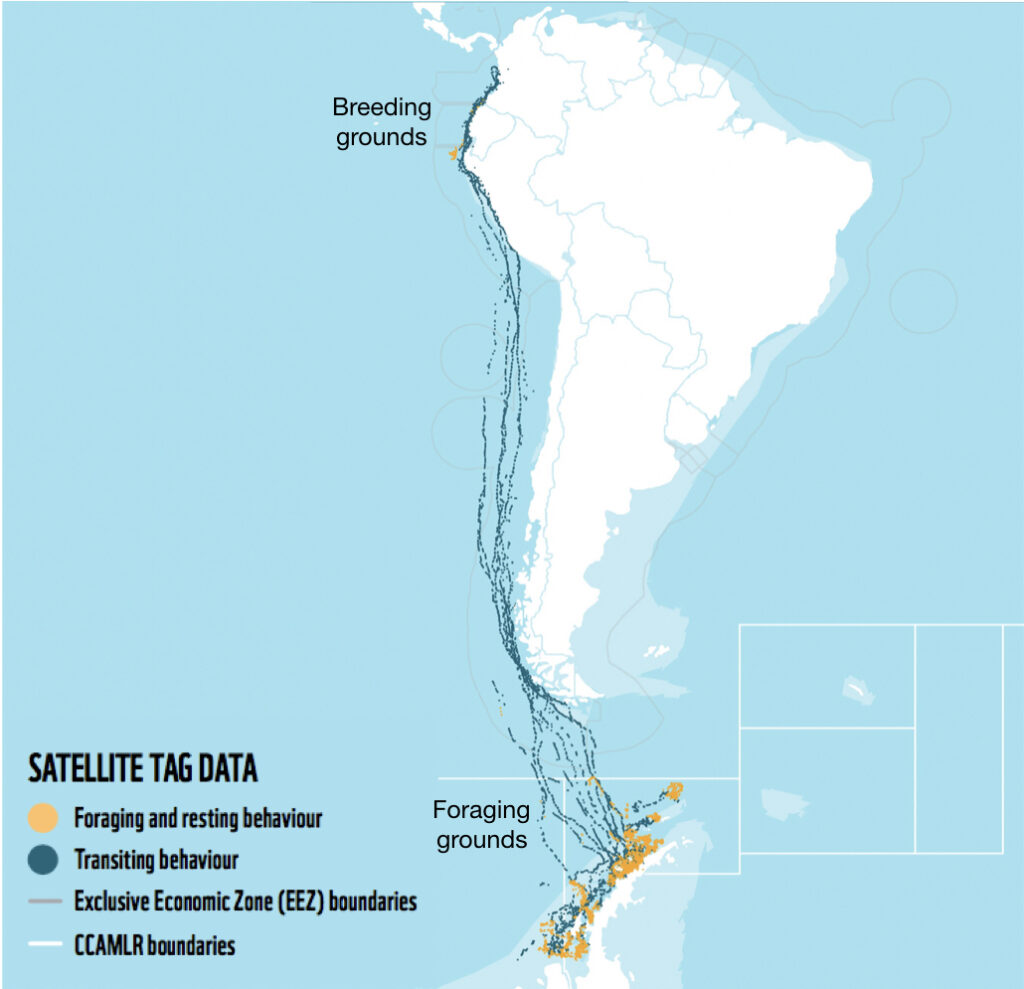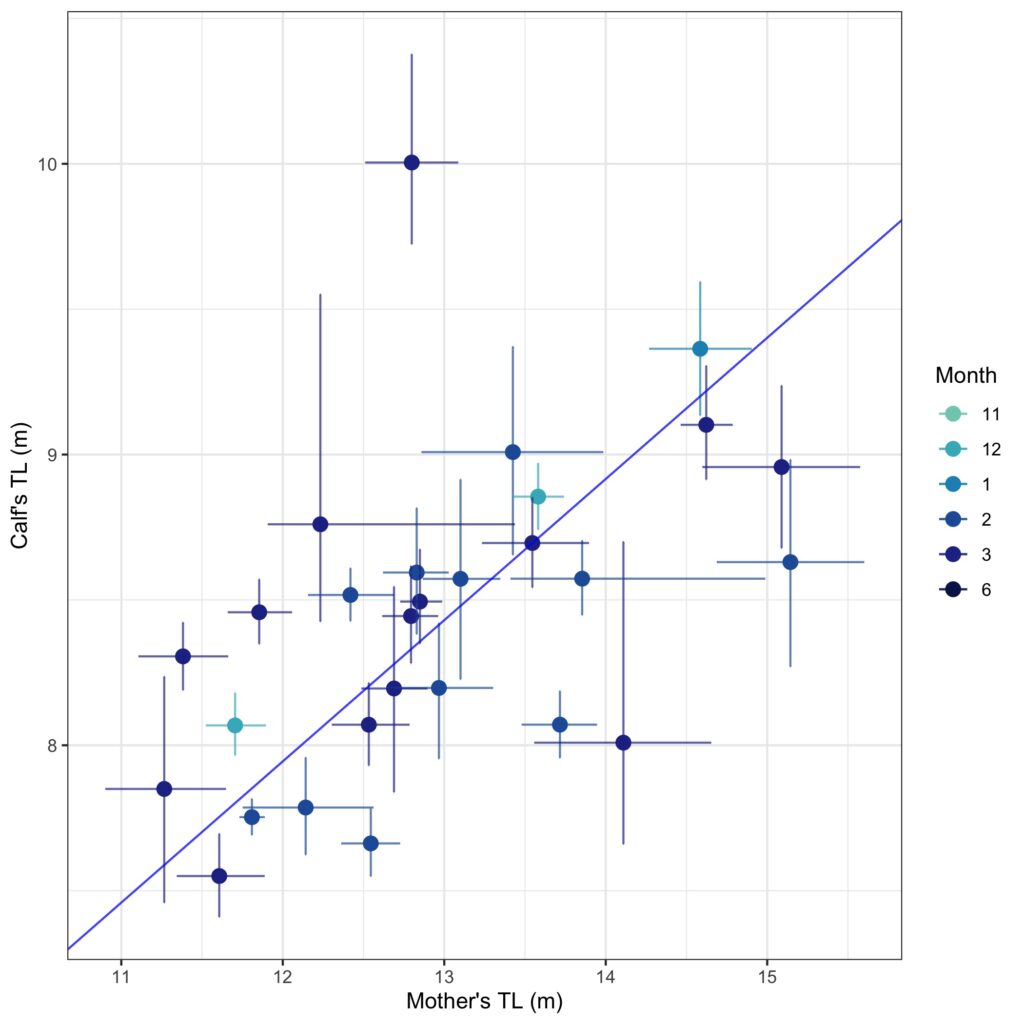Clara Bird, PhD Candidate, OSU Department of Fisheries, Wildlife, and Conservation Sciences, Geospatial Ecology of Marine Megafauna Lab
While I did not mean to start a mini-blog series on individual specialization, here I am with my third blog about individual specialization in as many years. Looking back, these blogs are actually a lovely documentation of my own journey of learning about individual specialization and I hope you’re enjoying being along for the ride.
So, what have we learned so far? In my first blog I described the concept of individual specialization, why it matters, and presented some case studies. In my second blog I discussed the roles of competition and learning as drivers of individual specialization. Let’s review: Individual specialization is when individuals within a population only use a subset of the resources that the full population uses, but different individuals use different subsets. This is important to quantify for two reasons: (1) it affects how we think about conserving and managing a population (Bolnick et al., 2003), and (2) it can affect the relationships between the population and the other species in its community (Bolnick et al., 2011). Common drivers of specialization are competition and learning. Competition can lead to specialization because it reduces the availability of a resource, driving individuals to switch resource use (Pianka, 1974). Learning can also lead to specialization through ‘one-to-one’ learning, where one individual learns from one demonstrator (Sheppard et al., 2018). This individual tends to then use, and eventually teach, that specialized technique.
While understanding these drivers is important, the question of why specific individuals employ specific specializations remains. If learning is not the driver of specialization, then how do individuals end up using their specific subset. Is it random? Or are there underlying patterns? The common sources of variation are related to sex, age, or size (and often these three can be inter-connected) (Dall et al., 2012).
Individual differences related to the sex of the individuals are called sexual dimorphisms. Physical and ecological differences between the sexes are common throughout nature (peacocks for example) and these differences can lead to different specializations. Northern elephant seals provide a fascinating example (Kienle et al., 2022). Northern elephant seal males are the distinctly larger sex as they engage in competitionfor females. Because of their larger body size and energy expenditure during competition, they have much higher energetic requirements than females during the breeding season, meaning that they need to consume more prey. This elevated requirement has led to a difference in foraging behaviors. Males forage near the continental shelf where there is more prey while females forage further offshore in the open ocean. However, the tradeoff of feeding on the continental shelf is an increased predation risk due to overlap with predator habitat, and indeed Kienle et al. found that the mortality rate for foraging trips was 5-6 times higher for males than females. So, while males need to take the risk of foraging in an area with higher predator presence to meet their energetic demands, females can forage in a safer habitat with less prey because their energetic requirements are lower. This study presents an excellent example of how sexual dimorphism can cause individual specialization and the subsequent consequences.
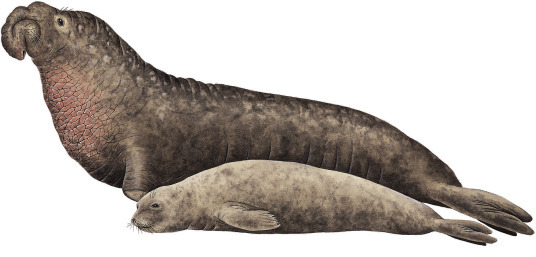
Individual specializations attributed to differences between distinct morphs are called resource polymorphisms. A morph is the physical appearance of an individual; distinct morphs are when there are clearly different kinds of morphs within a population. Morphs can range from color polymorphism (ex. lizards of different colors within the same species) to differences in skull shape and size. A study on the European eel found that differences in skull morphology were related to different foraging strategies (Cucherousset et al., 2011). Eels with larger head widths consumed larger prey types. Interestingly, they found that eels on either end of the head width spectrum (i.e., very narrow or very wide) were more successful (i.e., in better body condition) than eels with intermediate head widths. They suggest that this difference in nutrition success is because the intermediate head width eels were less efficient foragers than eels at the extremes. In this example we see that morphology is related to the ability to feed on a prey type and has consequences for individual health.

Individual differences related to changes in size, shape, and behavior that occur as an individual grows are called ontogenetic shifts. As you have experienced yourself, there are many changes that occur as an individual grows, and these changes can mean that different age classes have different specializations. Gustafsson (1988) found an ontogenetic shift in where coal tits (a species of bird) fed within a pine tree. Younger birds were more generalists but tended to feed on the outer sections of the tree, while adults foraged on the more profitable, central portion of the tree. He attributes this difference to dominance of adults over juveniles. Gustafsson also found that the larger individuals within each age class also tended to feed closer to the center of the tree. This within age class difference is attributed to a larger body size being better suited for feeding closer to the center of the tree, while smaller body sizes are better suited for hovering and foraging on the outside. Interestingly, this study occurred over multiple years, and Gustafsson documented several juvenile individuals that shifted foraging behavior when they became adults.

These sources of behavioral variation are important to account for because ultimately phenotypic variation can affect not only a population’s niche, but its population size, distribution, evolutionary potential, and vulnerability to environmental change (Wennersten & Forsman, 2012). And it’s important to determine which source(s) of variation are at play to inform best population management practices. Different behaviors between sexes versus age classes have different implications for the population, making it necessary to not only assess if there are differences but also to try and understand their drivers.
This behavioral variability relative to morphs is something that is of particular interest to me, and it is the focus of my first chapter. We’ve documented that the PCFG gray whales in our study region employ a variety of foraging tactics, and I want to know if there is specialization in tactic use and if we can find an underlying source of the variation. I can’t wait to share results with you in the next installment of this individual specialization journey. Stay tuned!
Did you enjoy this blog? Want to learn more about marine life, research, and conservation? Subscribe to our blog and get a weekly alert when we make a new post! Just add your name into the subscribe box below!
References
Bolnick, D. I., Amarasekare, P., Araújo, M. S., Bürger, R., Levine, J. M., Novak, M., Rudolf, V. H. W., Schreiber, S. J., Urban, M. C., & Vasseur, D. A. (2011). Why intraspecific trait variation matters in community ecology. Trends in Ecology & Evolution, 26(4), 183–192. https://doi.org/10.1016/j.tree.2011.01.009
Bolnick, D. I., Svanbäck, R., Fordyce, J. A., Yang, L. H., Davis, J. M., Hulsey, C. D., & Forister, M. L. (2003). The ecology of individuals: Incidence and implications of individual specialization. American Naturalist, 161(1), 1–28. https://doi.org/10.1086/343878
Cucherousset, J., Acou, A., Blanchet, S., Britton, J. R., Beaumont, W. R. C., & Gozlan, R. E. (2011). Fitness consequences of individual specialisation in resource use and trophic morphology in European eels. Oecologia, 167(1), 75–84. https://doi.org/10.1007/s00442-011-1974-4
Dall, S. R. X., Bell, A. M., Bolnick, D. I., & Ratnieks, F. L. W. (2012). An evolutionary ecology of individual differences. Ecology Letters, 15(10), 1189–1198. https://doi.org/10.1111/j.1461-0248.2012.01846.x
De Meyer, J., Belpaire, C., Boeckx, P., Bervoets, L., Covaci, A., Malarvannan, G., De Kegel, B., & Adriaens, D. (2018). Head shape disparity impacts pollutant accumulation in European eel. Environmental Pollution, 240, 378–386. https://doi.org/10.1016/j.envpol.2018.04.128
Gustafsson, L. (1988). Foraging behaviour of individual coal tits, Parus ater, in relation to their age, sex and morphology. Animal Behaviour, 36(3), 696–704. https://doi.org/10.1016/S0003-3472(88)80152-0
Kienle, S. S., Friedlaender, A. S., Crocker, D. E., Mehta, R. S., & Costa, D. P. (2022). Trade-offs between foraging reward and mortality risk drive sex-specific foraging strategies in sexually dimorphic northern elephant seals. Royal Society Open Science, 9(1), 210522. https://doi.org/10.1098/rsos.210522
Pianka, E. R. (1974). Niche Overlap and Diffuse Competition. 71(5), 2141–2145.
Sheppard, C. E., Inger, R., McDonald, R. A., Barker, S., Jackson, A. L., Thompson, F. J., Vitikainen, E. I. K., Cant, M. A., & Marshall, H. H. (2018). Intragroup competition predicts individual foraging specialisation in a group-living mammal. Ecology Letters, 21(5), 665–673. https://doi.org/10.1111/ele.12933
Wennersten, L., & Forsman, A. (2012). Population-level consequences of polymorphism, plasticity and randomized phenotype switching: A review of predictions. Biological Reviews, 87(3), 756–767. https://doi.org/10.1111/j.1469-185X.2012.00231.x



